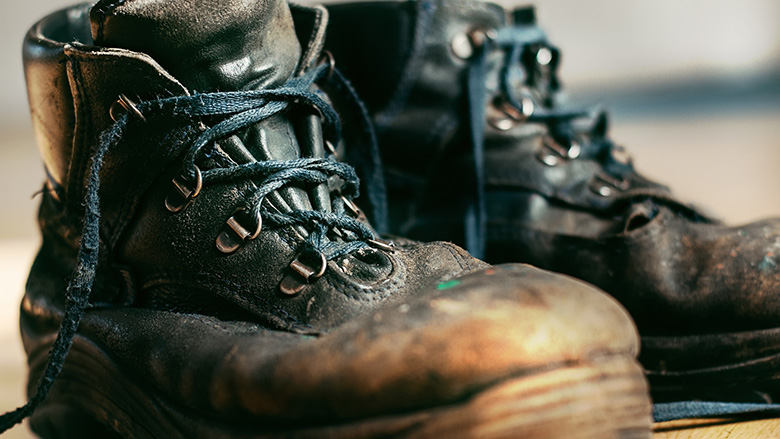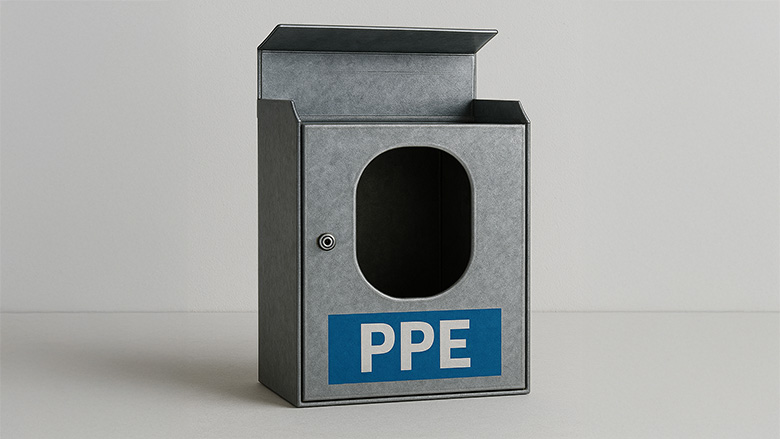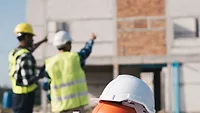Breaking Down Barriers: Making PPE Work for Restoration Professionals
From overheating suits to uncomfortable respirators, here’s how you can tackle the most common PPE challenges

Credit: Radiomoscow / iStock via Getty Images Plus
Introduction
In my time as an EHS Professional, I’ve heard every excuse in the book for not wearing PPE. However, to be fair to restorers, I’ve also seen misapplication of PPE that ranges from moderately uncomfortable to the PPE creating hazards! (Think along the lines of trip hazards, blocked vision, and overheating.) I’ve always reminded restorers to choose the right protection for the job and not overdo it; for instance, we can’t send restoration technicians into a job wearing a suit of armor!
In this article, I’m going to share some common barriers to PPE usage. I will also give solutions that can be applied to your job sites and provide additional comfort for restoration techs while being protected from hazards common to our industry.

Photo Credit: Signal Restoration Services
Barrier: “These suits are too hot/don’t fit/don’t protect me”
Solutions:
- Carry a range of sizes to match your workforce. Protective suits are usually chosen a size or two larger than street clothes to allow room to bend, twist, and squat.
- Tape can help with a sloppy fit. Suits are cut mostly the same, but the human body varies significantly. Try using tape to lift, tuck, or fold over areas that are too large and/or obtrusive.
- Talk to different providers and suit manufacturers to discover what suit meets your needs and has the best breathability possible. I still observe restorers using overly protective suits and workers suffering from it.
- Be sure workers get breaks. At a minimum, they should get the chance to sit down and cool off. Better yet, budget the job to allow suit changes throughout the day, which allows workers to take off a suit and cool down quicker. Hydration, of course, should be part of this.
Note: The hard reality is that restoration work can be hot and uncomfortable. Restoration companies need to learn to utilize the above solutions to at least minimize the discomfort. Workers may need to acclimatize to this work. Education and jobsite management is key.

Photo Credit: slobo / iStock via Getty Images Plus
Barrier: “These gloves don’t fit/fall apart/don’t protect me”
Solutions:
- Change out gloves often. Monitor and encourage workers to change gloves; at least at breaks.
- Just like the suit sizing solution above, work with suppliers and manufacturers to adequately cover different hand sizes. Good fit is critical to comfort and protection.
- Assure your nitrile gloves do not tear easily. Again, work with a supplier/manufacturer to find the quality and price point that works best for your crew. All gloves are not equal.
- Assure you have the right gloves for the job. Always have nitrile gloves for wet work. Supply coated/abrasion resistant gloves when materials wear the gloves out quickly. Supply cut resistant gloves when using knives or handling sharp materials like glass or metal.

Photo Credit: Liukov / iStock via Getty Images Plus
Barrier: “My respirator is uncomfortable”
Solutions:
- Be sure workers get breaks to take off the respirator and cool off.
- Supply dry towels and sanitary wipes to wipe down respirators during breaks and at the end of the day.
- For long duration jobs (days/weeks), supply respirator cleaning packets (think Tide Pods) that can be dissolved in a bucket of water and allow respirators to be dunked in the solution for a more thorough cleaning.
- Assure the respirator fits correctly through fit testing and consider upscaling the quality of the respirator to a more premium face seal material.
- Assure the cartridges are changed frequently enough to avoid overloading and making it harder to breathe through the cartridge.
- Assure respirators are stored properly, which means clean, dry, in a bag, and away from sources of heat or cold.
Note: Respirators are like suits; they can become uncomfortable to wear. Refer to the note on suits.

Photo Credit: Sergey Pakulin / iStock via Getty Images Plus
Barrier: “My boots are killing my feet”
Solutions:
- Encourage workers to try on different boots and find the most comfortable boot that still meets your protection needs. I have found that boot insoles and soles vary widely and there have been excellent advances in comfort over the years.
- Encourage workers to wear quality socks designed for work or hiking applications. Cotton may not be the best solution; there are lightweight wool socks available that wick sweat and are not hot.
- Encourage workers to purchase waterproof boots. Yes, there are times when workers should be wearing rubber boots. However, whether it be rainfall or a domestic water leak, there are times when waterproof boots help keep worker’s feet dry.
- Some workers will need to adjust to long hours on their feet and walking many miles a day. Approach this situation as a marathon, not a race. Strategic breaks are critical.
Barrier: “It costs too much.”
Solutions:
- Always make sure you capture PPE job costs and follow standard industry billing practices to get reimbursed.
- Work with a supplier who understands your industry and can find adequate protection for a reasonable cost. Don’t try to do this yourself – there are many great restoration supply companies!
- The correct PPE for the job, that also fits well, can save you money over time. Technicians won’t need additional breaks to cool down and they won’t have to leave the work area to change out torn gloves or suits. Workflow becomes more efficient. And even more importantly, they won’t be injured or exposed, miss workdays, or have worker’s comp claims.

AI Generated: Image generated by AI using OpenAI's DALL·E, April 2025.
Barrier: “We didn’t have those when we started the job”
Solutions:
- Restoration work trucks and vans should always be stocked with PPE that is typical for the types of work you perform. Make a standardized list of what a truck should have and routinely check and restock them. This is way cheaper than a worker’s comp claim or running to Home Depot for something!
- Use bags or plastic bins for PPE and label them. Get your trucks/vans organized so that it’s easier to grab the right PPE and restock it.
- Teach technicians to think ahead of what PPE they will need and verify they have it before they leave. You wouldn’t go to a water mitigation job without first making sure you have the right amount of drying and dehumidification equipment, so don’t leave without verifying you have the right PPE!

Photo Credit: fcafotodigital / E+ via Getty Images
Summary
Notice I have repeated a few themes:
- Talk with your PPE supplier or manufacturer. Their representative can help you understand options to allow better PPE fit, application, and comfort.
- Cheaper isn’t always better. Suits, gloves, boots, and respirators all have variations, and some are worth the extra cost to allow comfort for longer duration jobs. Adjust the PPE quality to match the job demand and remember what I mentioned about job efficiency.
- Restoration work is not always comfortable, so don’t sugar-coat the reality to workers. Rather, talk through the above solutions and apply them to the job site.
- Employers should discuss PPE usage when interviewing prospective employees, cover it during onboarding, and continue training throughout employment.
- Training helps tremendously. Be sure your PPE training covers:
- Why we are wearing PPE
- The risks of not wearing PPE; especially long-term effects
- How to properly don and doff (put on and remove) PPE
- How to maintain and clean PPE
- Refer to the OSHA PPE publication in the References section for specific training requirements
Close out
Our work in the restoration industry necessitates PPE usage for most jobs. Jobsite conditions are not always comfortable, and PPE can make it even less comfortable. These conditions, along with poor selection or application of PPE, can create legitimate barriers to wearing PPE. However, we all know that there can be serious short- and long-term negative health effects if we don’t protect ourselves. This is why Restorers must find and apply solutions to the PPE barriers to protect ourselves and come home healthy at the end of the day. Resources
Common Pitfalls to Avoid When Selecting PPE for Restoration & Remediation Work, October 28, 2024, Curtis Chambers, Restoration & Remediation Magazine Online. https://www.randrmagonline.com/articles/91019-common-pitfalls-to-avoid-when-selecting-ppe-for-restoration-and-remediation-workPPE for Restoration Contractors – 5 Common Misconceptions, April 14, 2022, Chloe Hudson, Reets Drying Academy. https://reetsdryingacademy.com/blog/5-common-myths-about-ppe/
Personal Protective Equipment, Occupational Safety and Health Administration, OSHA 3151-02R 2023. (Note the section on employee training requirements.) https://www.osha.gov/sites/default/files/publications/osha3151.pdf
The critical role of PPE in the restoration and construction trades, December 11, 2023, Al Ruggie & Joshua Rudin, Industrial Safety & Hygiene News. https://www.ishn.com/articles/113985-the-critical-role-of-ppe-in-the-restoration-and-construction-trades
Looking for a reprint of this article?
From high-res PDFs to custom plaques, order your copy today!







